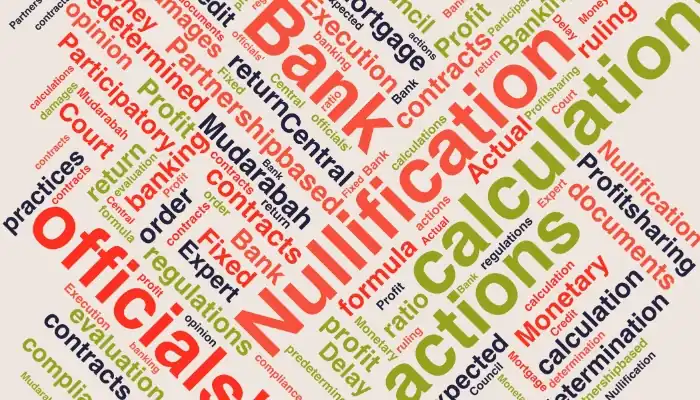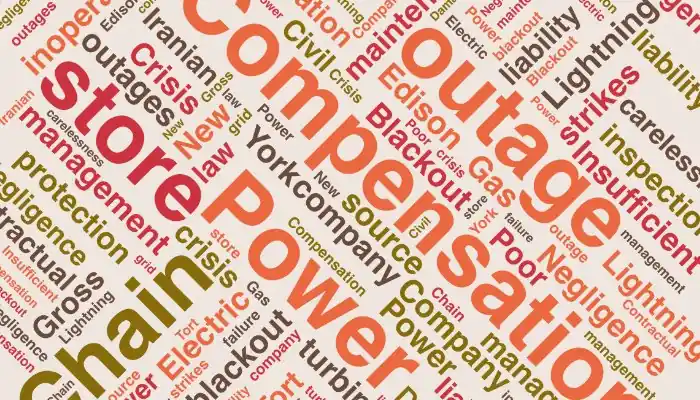An entrepreneur entered into two Mudarabah contracts with the defendant bank on 27/02/2009 and 17/03/2008 At the end of the contracts, the bank, disregarding the directives and circulars of the Central Bank and the monetary and banking laws and regulations, calculated the profit from these contracts (which fall under partnership-based contracts) using a fixed and predetermined return formula, similar to contracts such as installment sales and forward contract. The bank then issued an execution order to the notary public to demand the amounts.
The plaintiffs’ attorneys submitted a petition requesting the court to issue a ruling declaring the nullification of the bank’s calculations of the profit from the two Mudarabah contracts, the nullification of the execution requests related to the two mortgage documents, and the acknowledgment and declaration that the bank is not entitled to claim until the actual profit from the Mudarabah is evaluated and calculated, and to apply this to the official mortgage documents for the allocation of facilities.
After the hearing, the court issued an expert order to have the appointed expert review the financing file at the defendant bank and provide an opinion on the actions of the bank officials in calculating the profits related to the Mudarabah contracts and their compliance with the country’s monetary and banking regulations. Additionally, the court deemed it necessary to inquire with the Central Bank regarding the method of calculating profits for contracts titled as Mudarabah. The inquiries were as follows:
– Whether the expected profit can be used as the basis for determining the definite profit of a Mudarabah according to monetary and banking regulations.
– Whether banks can include any amount of profit or late payment penalties in Mudarabah contracts and use them to prepare execution requests.
– How the profit from a banking Mudarabah should be calculated in cases where determining the definite profit at the beginning of the contract is not possible.
The Central Bank, in its response dated 17/03/2017 to the inquiry, states: According to Article 13 of the Executive Regulations of Mudarabah approved on 08/04/1984 by the Money and Credit Council, the minimum and maximum profit-sharing ratio between the bank and the agent is determined by the Money and Credit Council. Regarding the method of calculating profit in contracts titled Mudarabah according to monetary and banking regulations, in participatory contracts, granting facilities in the form of such contracts is legally based on participation and its consequent effects. One of the main features of participatory contracts, by their nature and essence, is that the relationship between the bank and the customer is a partnership, and the bank and the customer are considered partners. Therefore, the bank’s contribution and the customer’s contribution are accounted for as their respective shares. Consequently, when the customer approaches the bank and requests participation, if the estimated proceeds from the execution of the participation project meet the expected return of the bank, as approved by the Money and Credit Council and communicated by the Central Bank of the Islamic Republic of Iran, the bank can become a partner with the customer in the participation project. After accepting the plan, the bank is obliged to specify and include items such as the duration of the participation and the profit-sharing ratio between the bank and the customer in the participation contract. Finally, at the end of the participation, the profit is calculated from the difference between the current value of the project and the costs incurred, and the partners’ share of the added value of the project (the actual profit) is determined in proportion to their respective shares or in any manner they agreed upon in the contract. Therefore, due to the nature of participatory contracts, determining a pre-fixed and definitive profit rate in facilities granted within the framework of participatory contracts is irrelevant and unjustifiable. In fact, what is initially mentioned by the bank during the process of reviewing and evaluating the participation project as the expected return is merely a criterion based on which the bank or non-bank credit institution decides whether or not to participate in the project proposed by the customer and is not the basis for calculating the definitive profit derived from the participation. It is evident that at the end of the participation project, regardless of what was previously set as the expected return, the partners’ share of the added value of the contract (the actual profit) is calculated, which may differ from the initial expected return.
The court-appointed expert also expressed the following opinion in his report: The interest rate for the loan was definitively set at 25%, and in case of delay, it was set at 31%. In sections (8-4-2) and (8-4-3), referring to the circulars and directives of the Central Bank and the resolutions of the Money and Credit Council to align the country’s monetary and banking regulations with the subject matter, he stated that the Mudarabah contract, in the classification of bank contracts, falls under participatory contracts. Therefore, the definitive profit of the bank is determined at the end of the contract based on the actual performance of the contract’s subject matter. The minimum expected profit rate or any amount mentioned as expected profit in the participation contract, such as Mudarabah, is by no means a basis for calculating the profit at the end of the contract term. Instead, determining the expected profit rate serves merely as a criterion for deciding whether to accept or reject the applicant’s proposed projects. Regarding participatory contracts, the expected profit is always considered, and thus, the subject of profit in these contracts is probable, making them contracts with variable returns. In contrast, in exchange contracts, the profit is always fixed and can be calculated with a specific formula. He further stated that the defendant bank calculated the profit using a formula, disregarding the fact that it is fundamentally impossible to calculate profit formulaically in a participatory contract like Mudarabah. This calculation was based on an annual definitive profit rate of 25%, and it was observed that this profit, along with an additional 6% as delay damages, was considered. The bank’s approach contradicts the laws, regulations, and circulars of the Central Bank.
Summary of the Ruling
Ultimately, the presiding court on 19/05/2018, after presenting its reasoning and based on the above considerations, the review of the totality of the documents, the contents of the case file, the expert report and its attachments, and considering the resolutions of the Money and Credit Council, the directives and circulars of the Central Bank, the Central Bank’s policy and supervisory packages, the Central Bank’s response to the inquiry, and other relevant laws, finally recognized the plaintiff’s claim as valid and issued the following ruling:
1. Declaring the invalidity of the bank’s calculations in determining the profit from the two Mudarabah contracts.
2. Declaring the invalidity of the requests for issuance of execution orders related to the two mortgage deeds.
3. Determining and announcing that the bank is not entitled to extend its claim of debt to the official mortgage deeds for the allocation of facilities before the real profit of the Mudarabah is evaluated and calculated.




